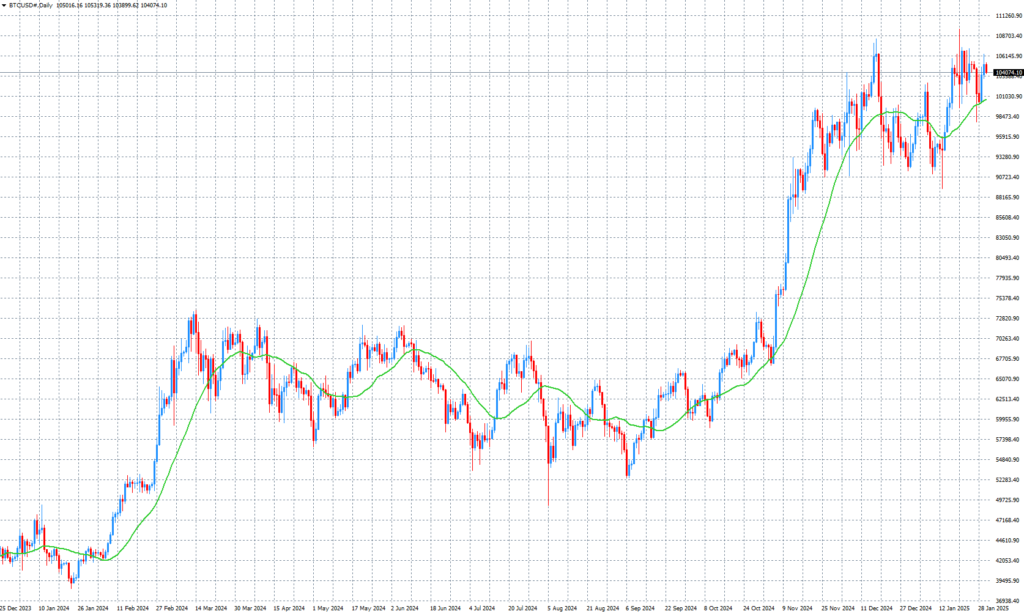- 2025-02-14
Currency Strength Report for Today
Today’s Currency Strength Analysis: AUD Leads, CHF Rec……

Bitcoin Daily Chart

The European Central Bank (ECB) has explicitly rejected Bitcoin as a reserve asset due to concerns over security, liquidity, and regulatory issues. ECB President Christine Lagarde emphasized the importance of safety and crime-free assets for central bank reserves. Despite these criticisms, Bitcoin’s price continues to rise, maintaining its position as a highly volatile yet increasingly adopted digital asset.
Based on this article and the uploaded daily Bitcoin chart, let’s examine the market trends and future prospects of Bitcoin. The current chart shows a clear upward trend starting from the end of 2024, with prices consistently staying above the moving average line (green line), indicating a strong bullish market sentiment.
The concerns about security and regulation raised by ECB President Christine Lagarde are undoubtedly important from the perspective of central banks. However, Bitcoin’s unique characteristics, such as its ability to be traded 24/7 with high liquidity and the transparency ensured by blockchain technology, cannot be ignored. These features have led to Bitcoin being recognized as “digital gold” among institutional and individual investors, with more portfolios including Bitcoin as a means of diversification.
Looking at the chart, while there have been temporary price corrections, the overall upward trend remains intact. This trend is driven more by long-term demand growth than by short-term speculative movements. Moving forward, the following factors will be key to the market:
In conclusion, Bitcoin’s future appears optimistic, supported by increasing adoption, regulatory developments, and its role as a valuable digital asset in diversified portfolios.
Based on this article and the chart, here is actionable advice for beginners who are considering starting their Bitcoin investment journey.